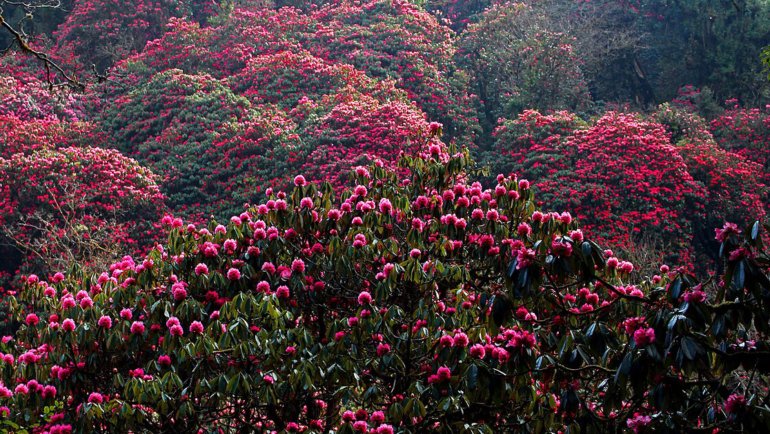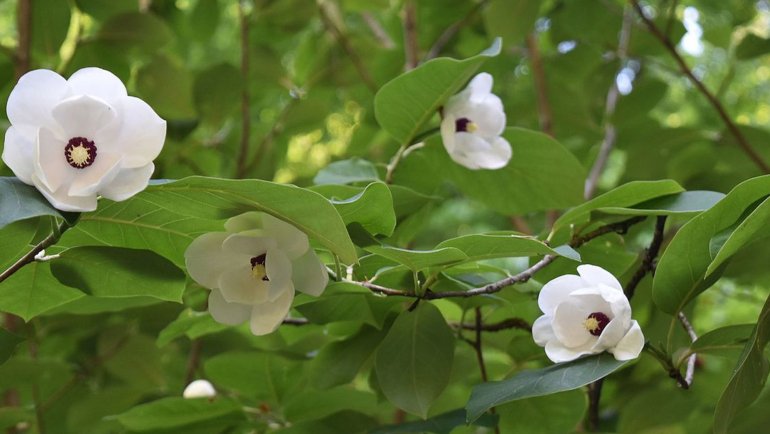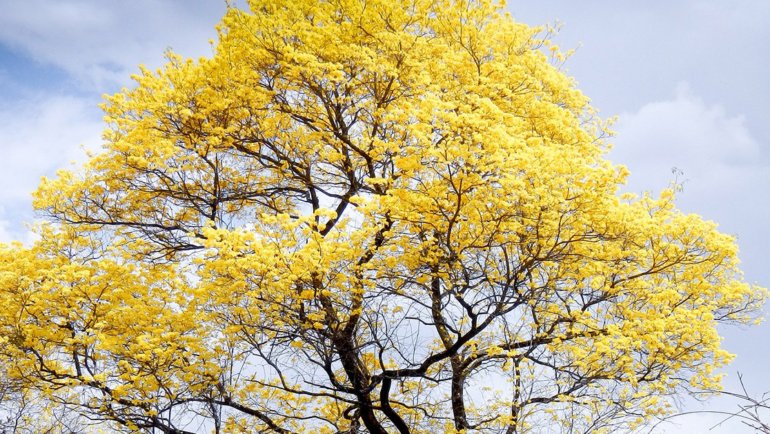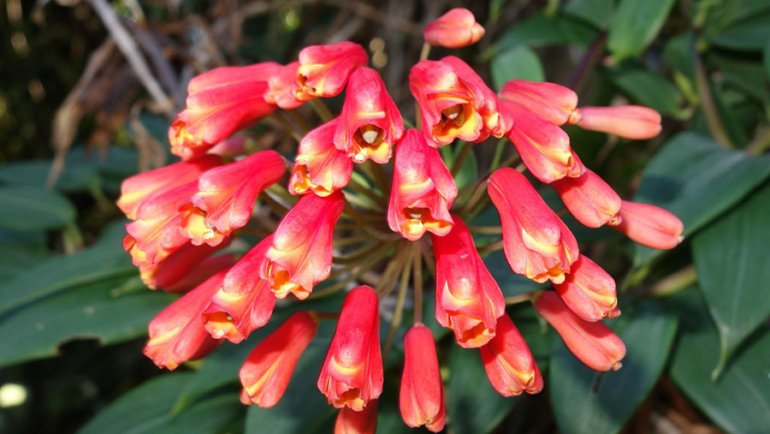Panama, a vibrant nation teeming with rich culture and breathtaking landscapes, is also home to an incredible array of flora and fauna.
This diversity extends to their national flower, an orchid known as Peristeria elata, which bears the evocative nickname, “The Holy Ghost Orchid.” With a fascinating backstory and a striking appearance, this orchid invites you on an exploration of the wild beauty of Panama.
Description of Peristeria elata
Peristeria elata, a captivating orchid species, stands out from the rest of its kin due to its stunning and intricate design. This perennial epiphyte presents a robust pseudobulb structure that grows up to 12 cm in diameter. Each bulb produces several pleated leaves that can reach up to 120 cm in length, providing a lush backdrop for the flowers.
The real magic of this flower lies in its bloom. A tall, upright inflorescence emerges to bear clusters of up to 10 flowers, each with a distinctive waxy, pure white texture. The central part of the flower, the column or stem, resembles a dove in flight – hence the name “The Holy Ghost Orchid.”
This mystical figure, complete with wings and a ruffled body, sits nestled in the heart of the flower, creating an image that is as symbolic as it is beautiful. The blooms are also fragrant, typically filling the surrounding air with a sweet, enticing scent during the blooming period from July to October.
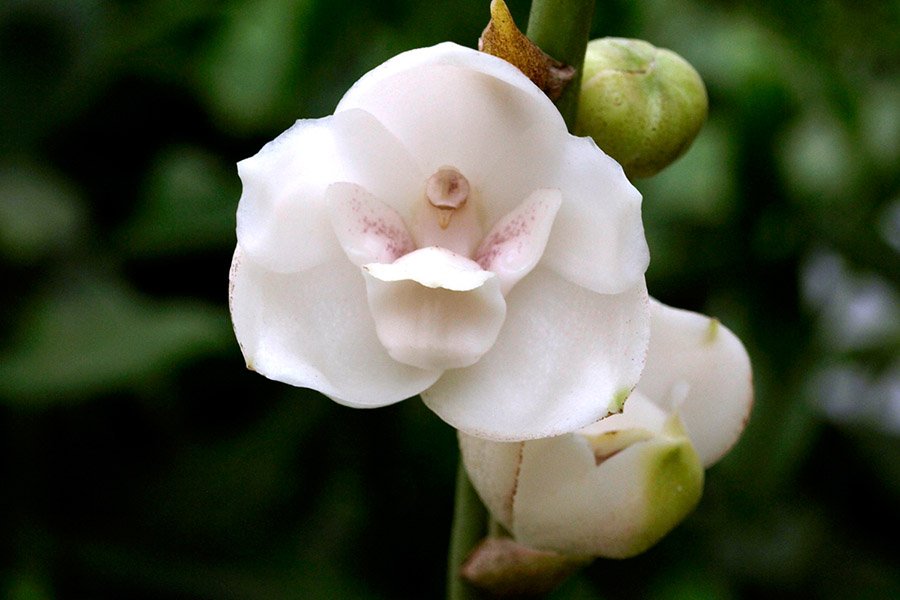
Where Does Peristeria elata Grow?
The Holy Ghost Orchid is native to the tropical forests of Central and South America, with a distribution ranging from Panama to Peru.
In Panama, this flower tends to flourish in the lowland tropical rainforests, cloud forests, and occasionally, the seasonally dry forests.
The orchid typically prefers areas with high humidity and substantial amounts of indirect sunlight, attaching itself to trees and other plants in its natural epiphytic habit. This orchid can be found at altitudes ranging from near sea level to 1,200 meters above sea level.
Peristeria elata in The Ecosystem
As a part of the tropical forest ecosystem, the Holy Ghost Orchid plays a vital role in its environment. One of its primary ecological contributions is in providing food for pollinators.
The flower’s sweet scent and attractive form are a beacon for bees, which are the primary pollinators of this orchid species. These insects are attracted to the flower’s fragrance, and in the process of gathering nectar, they transfer pollen from one flower to the next, facilitating their reproduction.
Moreover, the orchid’s epiphytic lifestyle also has ecological benefits. By growing on the branches of trees without taking nutrients from them, the Holy Ghost Orchid helps to increase the vertical stratification of the forest. This contributes to biodiversity by creating additional niches for other species of epiphytes, insects, and birds.
However, it should be noted that while this orchid contributes to the ecosystem, it is also sensitive to disturbances in its environment, being vulnerable to deforestation and illegal collection.
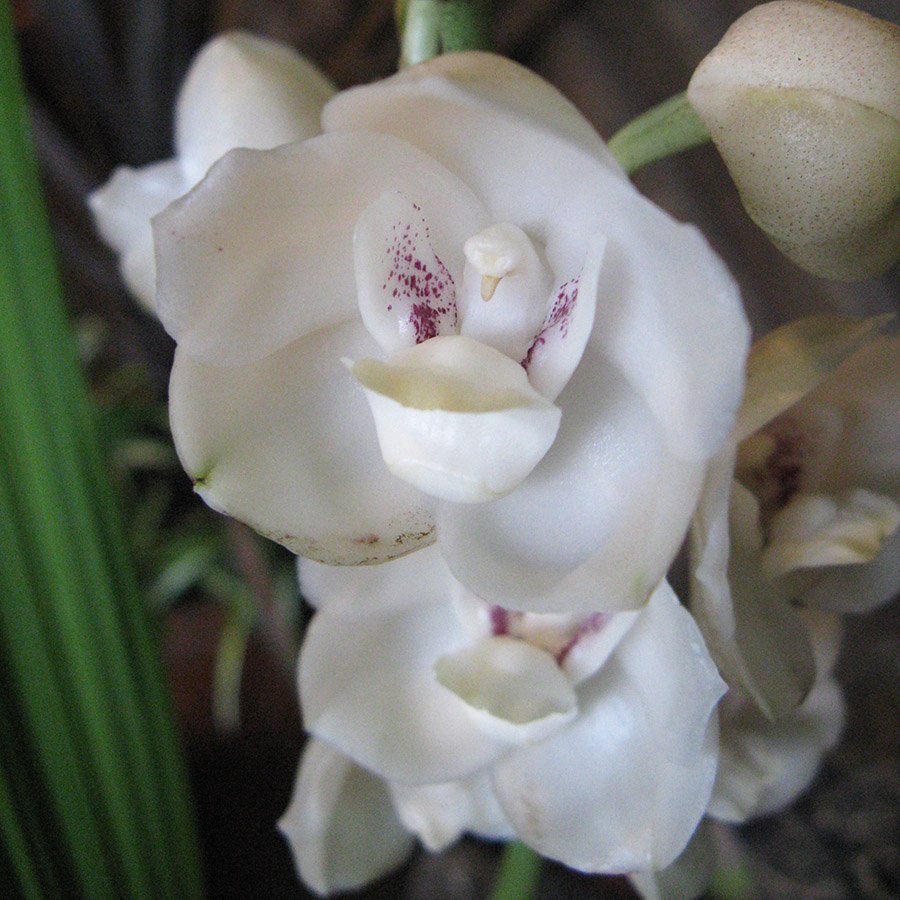
Symbolism and Meaning: Why and When Did Peristeria elata Become the National Flower of Panama?
Peristeria elata was officially declared the national flower of Panama on July 20, 1980. Fondly referred to as the ‘Flor del Espiritu Santo,’ or ‘Flower of the Holy Spirit,’ it holds a special place in the hearts of the Panamanian people due to its unique form and fascinating history.
This exquisite flower is said to symbolize purity, spiritual sanctity, and the patriotic spirit of Panama. It’s also reflective of the nation’s rich biodiversity and environmental commitment.
The ‘Flower of the Holy Spirit’ is also cherished because of the unusual shape of its central structures, which closely resemble a dove in flight. The dove is a symbol of the Holy Spirit in Christian symbolism, hence the flower’s name. It’s also said to embody the spirit of harmony, peace, and freedom – ideals that align closely with Panama’s national ethos.
Names of Peristeria elata
The scientific name of the flower is Peristeria elata, which belongs to the Orchidaceae family. However, it is more commonly known by several other names.
In Panama and other Spanish-speaking nations, it’s often called ‘Flor del Espiritu Santo’ or ‘Dove Orchid.’ This is due to the striking resemblance of its inner structures to a dove, the symbol of the Holy Spirit in Christianity. In English, it’s also referred to as the ‘Holy Ghost Orchid’ or the ‘Dove Orchid’.
While its scientific name is universally accepted, the common names for this flower can vary greatly across different countries and languages, reflecting the diverse cultural interpretations of its unique appearance.
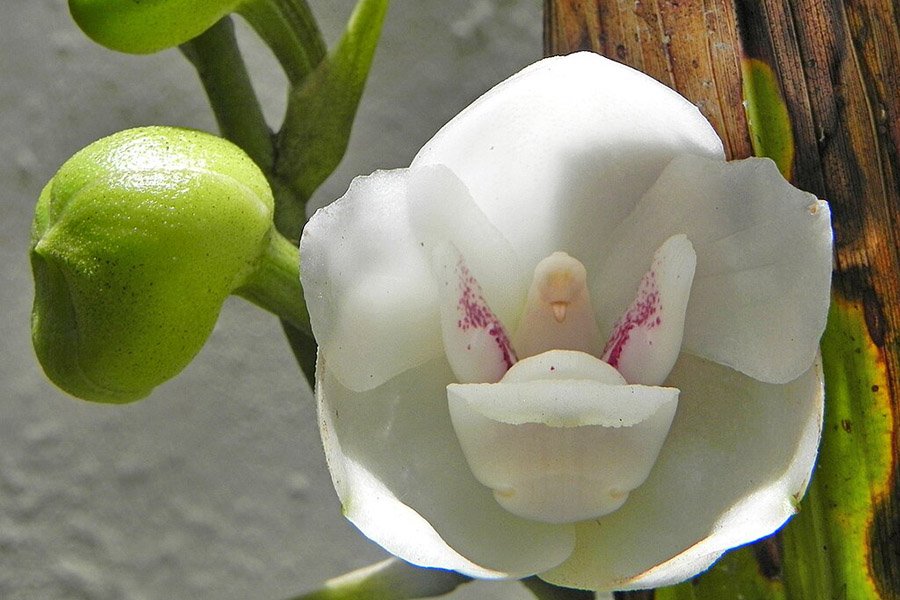
Interesting Facts About Peristeria elata
- The ‘Flower of the Holy Spirit’ is an endangered species. Due to habitat loss and illegal collecting, the numbers of this orchid in the wild have been significantly reduced. This has led to its inclusion in the Appendix I of CITES (Convention on International Trade in Endangered Species), meaning that international trade of this flower is strictly regulated.
- Peristeria elata is Panama’s national flower because of its dove-like shape, but it’s also recognized for its delightful fragrance. The flower emits a pleasant scent, which some people describe as similar to beer.
- The flower’s unique appearance has also earned it a special place in art and literature, with its likeness featured in a range of works across various mediums, from paintings to poetry.
How to Grow Peristeria elata
Cultivating the ‘Flower of the Holy Spirit’ can be a rewarding experience for any plant lover, but it does require specific conditions to thrive:
- Light: As an orchid, Peristeria elata prefers bright, indirect light. It can tolerate some direct sunlight, but too much can cause leaf burn.
- Temperature: This orchid is a warm-growing plant, thriving in daytime temperatures of around 75-85°F (24-29°C) and night temperatures of 60-65°F (15-18°C).
- Watering: During the active growth period, water the plant thoroughly once a week. In the resting period, reduce watering to once every two weeks.
- Soil: A well-draining orchid mix is ideal for this plant. This could include fir bark, perlite, and sphagnum moss.
- Fertilizer: Use a balanced orchid fertilizer to feed the plant every two weeks during the growing season. Reduce feeding during the resting period.
- Humidity: High humidity levels of around 70-80% are ideal for this orchid. If your environment is dry, consider using a humidity tray or a humidifier to increase moisture levels.
Remember, growing this flower from seed or cuttings is discouraged due to its endangered status. Please source plants responsibly, preferably from reputable nurseries that propagate their plants from divisions or lab-grown specimens.
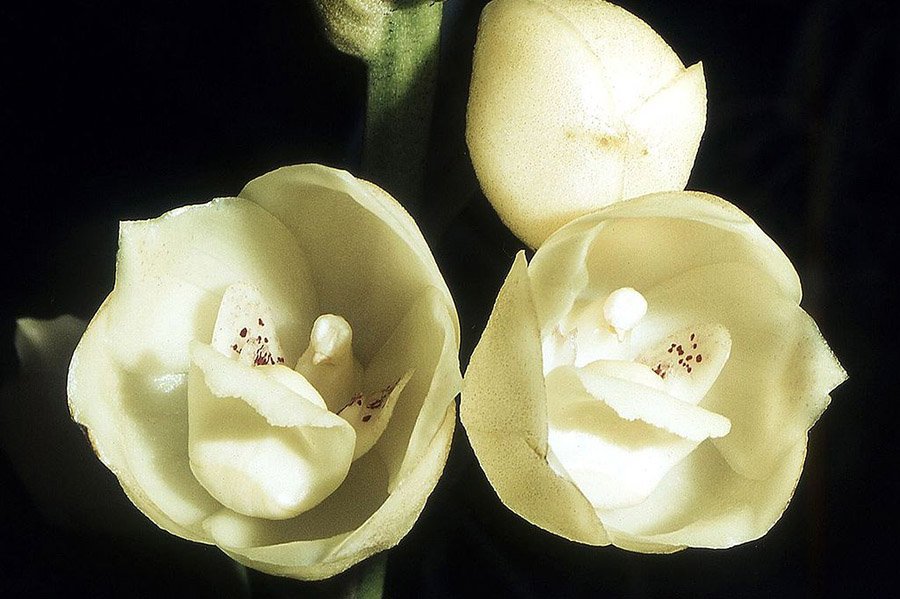
Other Beautiful Flowers Native To Panama
Panama’s rich biodiversity extends far beyond Peristeria elata. Here are some other stunning native flowers that you can find in the country:
- Passiflora Vitifolia: Also known as the grape-leaved passion fruit, this vine boasts stunning crimson flowers that stand out against the plant’s deep green foliage.
- Anthuriums: These are beloved for their vibrant and glossy heart-shaped “flowers,” which are actually modified leaves or spathes. Anthurium andreanum, known as the flamingo lily, is a particular standout.
- Bromeliads: These tropical plants come in a variety of shapes, sizes, and colors. Some bromeliad species native to Panama include Aechmea fulgens and Guzmania lingulata.
- Heliconias: Known as “lobster-claws” due to their unique shape, heliconias are colorful tropical plants that bring a touch of the exotic to any landscape.
- Ginger Flowers: Several species of ginger, including torch ginger (Etlingera elatior) and red ginger (Alpinia purpurata), add splashes of color to Panama’s natural areas.
Final Thoughts
Peristeria elata, Panama’s national flower, is more than just a beautiful orchid; it’s a symbol of the nation’s rich natural heritage and a testament to its remarkable biodiversity. This unique flower, with its dove-like shape, captivates with its beauty and inspires with its resilience.
Just as the dove is a symbol of peace, the ‘Flower of the Holy Spirit’ serves as a reminder of the harmony we can find in nature if we work to protect and preserve it. As we conclude this exploration of Panama’s floral emblem, we invite you to share your thoughts, experiences, and perhaps even your encounters with this incredible flower.
